Growing your edible vegetables at home is a rewarding experience that brings fresh, nutritious food to your table. Whether you have a large garden, a small balcony, or even just a sunny window, you can grow various vegetables that will add flavor and nutrition to your meals.
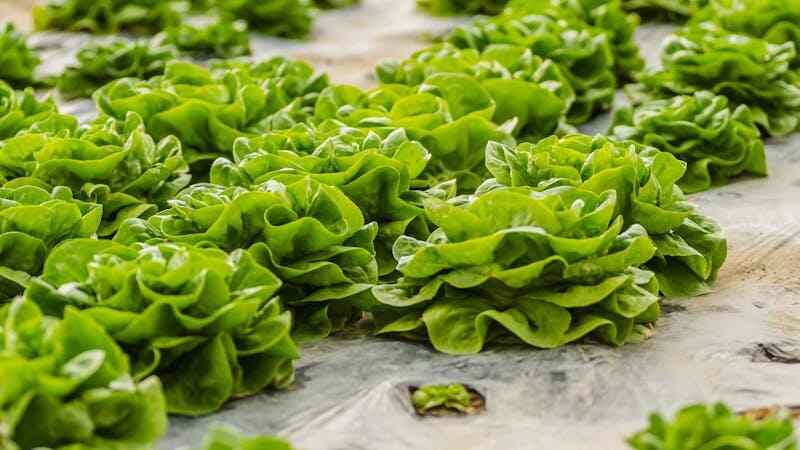
In this guide, we’ll explore everything you need to know to grow edible greens successfully, the benefits of doing so, and how to use your harvest in the kitchen.
Growing your edible vegetables not only enhances your culinary creations but also promotes a sustainable lifestyle. You can choose from a variety of options like spinach, kale, and arugula, each offering unique flavors and health benefits.
With the right techniques and care, you can enjoy a constant supply of fresh greens, reducing your reliance on store-bought produce. Plus, it’s a great way to engage with nature and develop a deeper connection with your food. This comprehensive guide will provide you with the tips, benefits, and delicious recipes you need to get the most out of your native greens.
Why Grow Your Vegetables?
The appeal of growing your edible vegetables lies in the freshness, taste, and health benefits they provide. While store-bought vegetables can lose nutrients during transportation and storage, home-grown vegetables are packed with vitamins, minerals, and antioxidants. You’ll also have peace of mind knowing how they were grown – without harmful pesticides or chemicals.
In addition to their nutritional value, growing your vegetables is a cost-effective way to enjoy organic produce year-round. Plus, growing your vegetables contributes to a more sustainable lifestyle by reducing your carbon footprint.
The best edible vegetables to grow at home
Growing these edible greens at home not only enhances your diet but also promotes healthy eating habits. Before diving into the process, let’s explore some popular edible greens that you can easily grow at home.
Choosing the Right Place to Grow Edible Greens
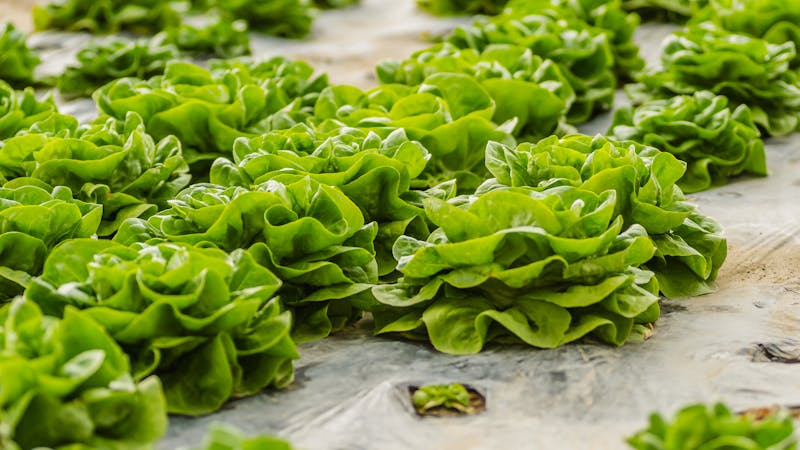
Most vegetables thrive in sunny locations, so plant them in an area that gets at least 4-6 hours of sunlight. However, some vegetables like spinach and lettuce can tolerate partial shade, making them suitable for areas with low sun exposure.
If you don’t have an outdoor space, don’t worry! You can easily grow edible vegetables in containers or pots near your balcony, patio, or even a bright window. For smaller spaces, container gardening is a great option.
Soil preparation
Healthy soil is the key to growing thriving edible vegetables. These plants prefer well-drained, nutrient-rich soil. To improve your soil, mix in compost or organic matter, which provides essential nutrients and improves water retention.
If you’re using containers, choose a high-quality potting mix designed specifically for vegetables and herbs. Most vegetables prefer a soil pH between 6.0 and 7.0. You can test your soil using a pH meter or home testing kit to ensure optimal conditions.
Sowing or planting seeds

Choosing between starting from seed or using plants depends on your gardening preferences and timeline There are two main ways to grow edible vegetables—starting from seed or using seedlings (young plants). Both options are effective:
• Seed starting: Plant the seed directly into the soil, following the instructions on the seed packet for depth and spacing. Greens such as lettuce and spinach can be sown directly outside after the danger of frost has passed. Allows for a wider selection of species and can be more cost-effective.
This is a rewarding process, as you nurture the plants from scratch, developing a deeper connection to your garden. Seeds like lettuce and spinach thrive when sown directly into the ground after a frost, ensuring a fresh harvest in the right season. on the other hand,
• Uses of plants:
If you prefer faster results, buy plants from a local nursery. Transplant them into your garden or containers, spacing them according to the plants’ needs. Provides a quick yield, ideal for those seeking instant gratification in their gardening endeavors.
Plants are already established, making them less vulnerable to pests and diseases in the early stages. Whichever method you choose, understanding the needs of your greens will help you grow a thriving edible garden.
Adequate spacing is essential to ensure air circulation and prevent disease. Vegetables grow fast, so you’ll see progress soon.
Watering your edible greens
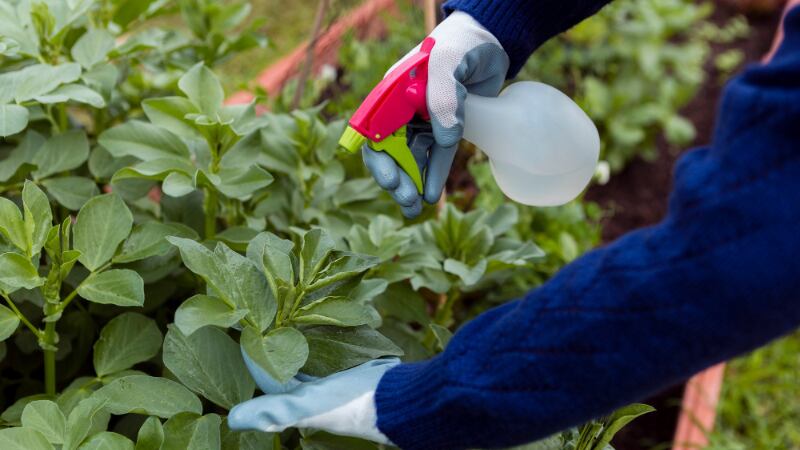
Water is essential to growing healthy edible vegetables, but it is important to avoid overwatering. Most vegetables need constant moisture, especially in hot weather, but they dislike wet soil. Water your plants in the morning to give excess moisture during the daytime to evaporate, preventing mold or disease.
If you’re growing in containers, be sure to water more often because containers can dry out faster than garden beds. Adding mulch around the base of your plants can help retain moisture and keep the soil cool.
Fertilize for optimal growth
Although edible greens do not require heavy feeding, promoting them with organic fertilizers can increase their growth and productivity. Use a balanced, slow-release fertilizer or compost to ensure your plants get the nutrients they need. Be careful not to over-fertilize, as this can lead to excessive leaf growth at the expense of flavor.
Fertilizing your edible greens is important to achieve vibrant, healthy plants, but moderation is key. Greens like spinach and kale benefit from organic options that provide a sustained release of nutrients over time. Balanced fertilizers usually contain equal parts of nitrogen, phosphorus, and potassium, which contribute to overall plant health and leaf growth.
Compost enriches the soil while improving its structure, encouraging beneficial microbial activity. However, adding too much fertilizer can dilute the natural flavors of your greens, leading to a watery or bland taste. By monitoring your plants and adjusting fertilizer application based on their growth stage, you can grow flavorful vegetables that are nutritious and delicious.
Pest control and general problems
Implementing natural pest control methods can help protect your edible greens without resorting to harsh chemicals. By being proactive and observant, you can effectively reduce pest damage while maintaining a thriving garden. Each method has its unique advantages, making it easy to choose the right one for your gardening style.
Pests such as aphids, slugs, and snails can sometimes target your greens. To manage this, consider natural pest control methods:
Neem Oil: A natural insecticide that can be sprayed on your plants to ward off pests. Using neem oil as a natural pest control solution is a great way to protect your greens. When diluted and sprayed on your plants, neem oil not only repels pests like aphids and spider mites but also protects against fungal diseases.
It works by interfering with the insects’ hormonal system, making it difficult for them to grow and reproduce. Moreover, neem oil is safe for beneficial insects when applied correctly, allowing you to maintain a balanced ecosystem in your garden.
Companion planting: Plant herbs such as basil, dill, or marigolds alongside your greens to deter unwanted pests. Companion planting is an age-old technique that involves strategically placing certain plants near your green to deter unwanted pests. Herbs like basil, dill, and marigold release natural compounds that repel insects while attracting beneficial insects.
Not only does this method provide a protective barrier, but it can also improve pollination and soil health, creating a stronger environment for your greens. By adding companion plants, you can increase biodiversity in your garden and reduce the need for chemical interventions.
• Hand-picking: For larger pests such as slugs, manually removing them in the morning or evening may be effective. Hand-picking is a simple but effective method of pest control, including larger nuisances such as slugs and snails. By inspecting your plants early in the morning or in the evening,
you can easily spot and remove these pests before they cause significant damage. This method is particularly effective for small gardens, where close monitoring is possible. Not only does it protect your greens, but it also allows you to engage more closely with your garden, allowing you to observe firsthand the health and growth of your plants. Keeping your garden clean and free of debris will also reduce the risk of pests and diseases.
Harvesting your edible.

Understanding when and how to harvest your greens is critical to maximizing their flavor and nutritional value. Each type of green has its unique requirements for harvesting, which can affect the overall health and productivity of the plants.
By following proper harvesting techniques, you can enjoy a constant supply of fresh greens as well as promote vigorous growth in your garden. What kind of cultivation are you doing:
• Lettuce and spinach: Cut the leaves when they are good enough to eat. You can cut individual leaves or the whole plant as needed. For lettuce and spinach, the best time to harvest is when the leaves have reached the proper size, usually about 4 to 6 inches long.
You can choose to cut individual leaves as needed, allowing the plant to continue growing, or you can cut the entire plant at once. This method encourages new growth and can extend your harvest period. Harvesting in the morning when the leaves are crisp can add flavor and freshness, making your salad even more delicious.
Kale and Swiss Chard: Kale and Swiss chard are particularly forgiving vegetables that allow for multiple crops during their growing season. To keep the plant alive, pick off the outer leaves and make sure the central growth is not interrupted. This practice not only promotes continuous production but also helps the plants to thrive.
Regular pruning of the outer leaves encourages the growth of new, tender leaves from the center, ensuring a sustainable supply of greens for salads, smoothies, and cooking. Cutting these greens at their peak freshness also enhances their flavor and nutritional benefits.
These vegetables can be harvested many times. Pick the outer leaves while keeping the central growth intact to encourage continuous production. Always harvest in the early morning or late afternoon for the best flavor and texture.
Regrowing vegetables for continuous harvest
Many edible vegetables can regrow after being harvested. Cutting leafy greens like spinach or lettuce just above the base often encourages new growth, allowing you to harvest multiple times from the same plant.
Regrowing greens is a great way to maximize your garden space and enjoy fresh produce all season long.
When you cut leafy greens like spinach and lettuce, make sure to leave some of the plants intact, as this encourages it to send out new shoots. By following this technique, you can create a continuous harvest cycle, reduce waste, and ensure a constant supply of greens for your meals.
It’s a simple yet effective way to enhance your gardening experience while enjoying the benefits of fresh, homegrown produce.
Growing edible vegetables indoors
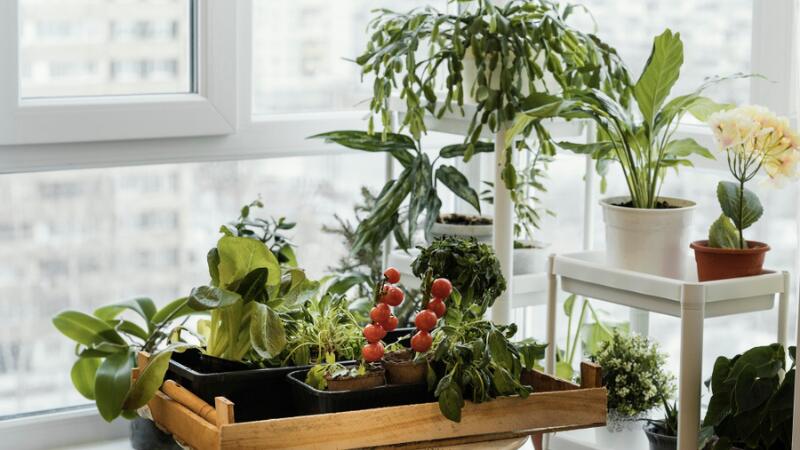
If you don’t have an outdoor space, you can still enjoy growing edible vegetables indoors. Choose a sunny window or use a grow light to provide your plants with enough light. Containers should have good drainage, and it’s best to use a lightweight potting mix.
Vegetables like arugula, spinach, and microgreens are ideal for growing indoors. Growing edible vegetables indoors allows anyone, regardless of outdoor location, to enjoy fresh produce year-round. Choosing the right location is very important.
Using a sunny window or grow lights ensures your plants get the light they need for healthy growth. Choose containers with good drainage to avoid waterlogging, and choose a lightweight potting mix to support root health. Indoor-friendly vegetables like arugula, spinach, and microgreens thrive in these conditions.
giving you a nutritious and flavorful addition to your meals. With a little attention to light, soil, and water, you can cultivate a vibrant indoor garden full of fresh greens.
Using your edible vegetables in the kitchen
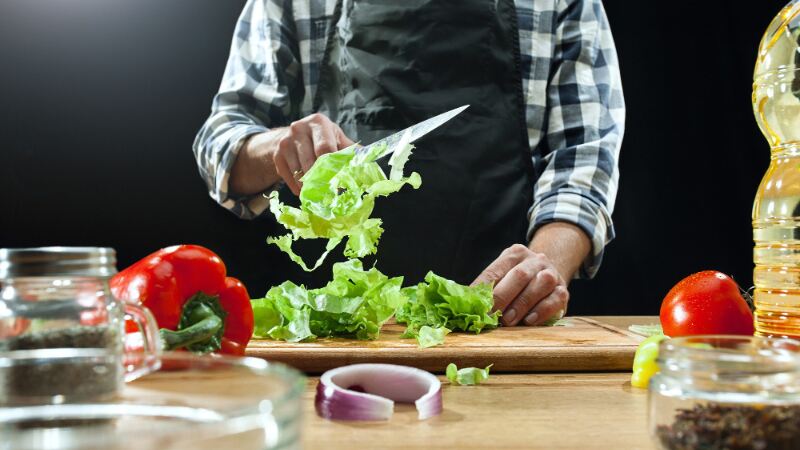
Once you’ve harvested your edible vegetables, there are endless possibilities for using them in the kitchen:
• Salads: Fresh greens like spinach, arugula, and lettuce make a delicious base for salads. Salads are a great way to showcase your native greens, providing a refreshing and nutritious meal option.
Using a variety of greens like spinach, arugula, and lettuce makes for a vibrant and flavorful salad base. You can add other ingredients to your salad, such as nuts, fruit, or cheese, to complement the greens with different textures and flavors. With endless dressing options, salads are versatile and can be tailored to suit any taste, making them a great way to enjoy your harvest.
Smoothies: Kale and spinach can be mixed into smoothies for an extra boost of nutrients. Adding kale and spinach to your smoothies is a great way to pack in essential nutrients while enjoying a delicious drink. These leafy greens blend seamlessly with fruits like bananas, plums, and mangoes,
providing a rich source of vitamins and minerals and masking any bitterness. A scoop of yogurt or a splash of almond milk can add creaminess and flavor, making your smoothies nutritious and satisfying. This method not only helps you consume your native greens but also supports a healthy lifestyle.
Stir Fries: Swiss chard and kale add great texture and flavor to stir-fries. Stir-fries are a quick and flavorful way to incorporate your native greens into your diet. Swiss chard and kale add both texture and hearty flavor, complementing other vegetables and proteins beautifully.
Lightly cooking these greens preserves their vibrant color and nutrients while adding depth to your dish. You can experiment with different sauces and spices, making stir-fries a versatile option that celebrates your garden’s fresh produce. With just a few minutes of cooking time, you can enjoy a nutritious meal that highlights the greens in your diet.
Toppings: Add vegetables like arugula to pizza, sandwiches, or tacos. Using vegetables like arugula as a topping is a delightful way to elevate your dishes with extra flavor and nutrition. Arugula peppers can enhance pizzas, sandwiches, and tacos, providing a fresh contrast to rich or savory ingredients.
Simply toss a handful of fresh arugula on top of a hot pizza or mix it into a sandwich for a burst of flavor. This approach not only makes your meals more exciting but also helps you enjoy the benefits of homegrown vegetables in creative and delicious ways.
Benefits of Growing Your Edible Vegetables
The benefits of growing your edible vegetables go beyond mere convenience. You will experience the joy of harvesting and eating food that you have grown yourself, leading to a deeper appreciation of food.
In addition, tending to your garden can act as a form of therapy, promoting mental well-being and physical activity. Growing your food has countless benefits:
• Fresh Produce: Enjoy vegetables picked fresh from your garden, There’s nothing like the taste of vegetables picked minutes before your meal, offering superior flavor and texture to the store-bought variety.
Freshness also means you can enjoy maximum nutritional benefits, as many nutrients begin to degrade soon after harvest. With homegrown vegetables, every salad and dish becomes a celebration of flavor and freshness.
• Health benefits: Homegrown vegetables are packed with nutrients that contribute to a healthy diet. Homegrown vegetables are rich in vitamins, minerals, and antioxidants, giving your meals a nutritional boost. Unlike many commercially grown vegetables, which can lose nutrients during transport and storage,
freshly grown vegetables retain their full nutritional value. Adding a variety of leafy greens to your diet can support overall health, boost immunity, and reduce the risk of chronic diseases. By growing your own, you have complete control over how they are cultivated, ensuring that your greens are free from harmful pesticides and chemicals.
Cost savings: Growing your own edible vegetables is a cost-effective way to enjoy organic produce. Reduces your grocery bills significantly, especially if you choose to grow organic varieties. The initial investment in seeds and supplies pays off immediately when you reap the rewards of your harvest.
By growing your vegetables at home, you can enjoy high-quality produce without the premium prices typically associated with organic produce in stores. This cost-saving advantage allows you to invest in other areas of your healthy eating journey while enjoying the satisfaction of self-sufficiency.
• Sustainability: By growing your own food, you are reducing your carbon footprint and promoting a more sustainable lifestyle a key benefit of growing your own vegetables. By growing your own food, you help reduce the carbon footprint associated with transporting produce from farms to grocery stores.
Home gardening promotes biodiversity, encourages the use of organic practices, and fosters a connection to the environment. Additionally, by growing your vegetables, you contribute to a more resilient food system, which positively impacts both local ecosystems and global sustainability efforts. Every seed planted is one step towards a healthier planet.
Conclusion:
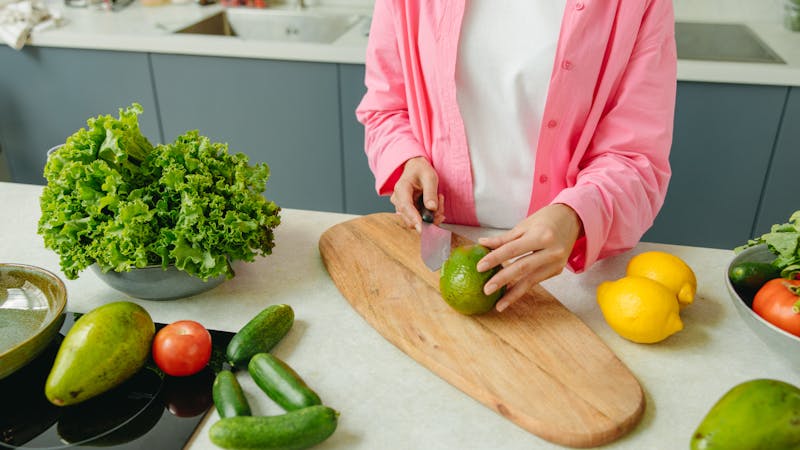
Growing your edible vegetables is an enriching experience. Whether you have a large garden, a small balcony, or even an indoor setup, you can grow various nutritious vegetables that will elevate your diet and improve your health. will So grab some seeds, plant them in the soil, and enjoy the fruits of your labor.
Embracing the journey of growing your vegetables opens up a world of flavor, health benefits, and sustainability.
By taking this step, you not only enhance your culinary creations but also develop a deeper connection with your food and environment.
The process of raising plants from seed to harvest can be incredibly fulfilling, providing a sense of accomplishment and happiness. So, no matter the size of your space now is the perfect time to start your gardening adventure—your taste buds and well-being will thank you.
Growing your own edible vegetables is not just about enhancing your meals; it’s also a journey that fosters a deeper appreciation for where food comes from. By cultivating these edible delights, you nourish both your body and spirit, making every bite a celebration of nature’s bounty


